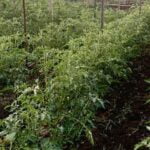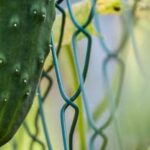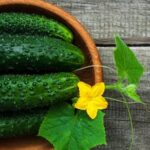Are you looking to join the community of central Texas vegetable gardeners? Central Texas is home to a rich tradition of vegetable gardening, with its unique climate and soil conditions providing both opportunities and challenges for local gardeners.
In this article, we will explore the various aspects of gardening in central Texas, from the ideal climate and soil conditions to recommended vegetable varieties, overcoming challenges, watering practices, pest and disease management, harvesting techniques, and connecting with the local gardening community. Whether you are a seasoned gardener or just starting out, this guide will provide valuable insights for successful vegetable gardening in central Texas.
Central Texas offers an ideal climate for vegetable gardening, with long growing seasons and mild winters. The region’s diverse soil types also provide excellent opportunities for growing a wide range of vegetables. However, navigating the unique challenges posed by the hot and dry weather can be daunting for many gardeners. This article aims to provide insight into how to make the most of these conditions to create a thriving vegetable garden.
From tomatoes and peppers to squash and greens, there are countless vegetable varieties that thrive in central Texas. We will explore the best-suited vegetables for this region and provide tips on how to select the right varieties for your garden.
Additionally, we will discuss common challenges faced by central Texas vegetable gardeners and share effective strategies for overcoming them. Whether it’s managing pests or dealing with diseases, this article will help you tackle these obstacles head-on and maintain a healthy garden throughout the growing season.
The Ideal Climate and Soil Conditions for Central Texas Vegetable Gardeners
Central Texas provides an ideal climate and soil conditions for vegetable gardening, making it a haven for avid gardeners. The region’s long, hot summers and mild winters create the perfect environment for growing a wide variety of vegetables. The rich, loamy soil found in Central Texas is also well-suited for cultivating a bountiful vegetable garden.
Climate Considerations
The climate in Central Texas is characterized by hot, dry summers and mild winters, which allows for an extended growing season. This makes it possible to cultivate both warm season and cool season crops throughout much of the year. However, central Texas vegetable gardeners need to be mindful of the extreme heat during the summer months and take appropriate measures to protect their plants from heat stress.
Soil Conditions
The soil in Central Texas is typically alkaline with good drainage, which is favorable for many vegetable crops. However, it may be necessary to amend the soil with organic matter such as compost or aged manure to improve its structure and fertility. Additionally, conducting a soil test can help determine any deficiencies and guide gardeners on how to properly fertilize their vegetable garden.
Overall, Central Texas offers a hospitable environment for vegetable gardening, with its favorable climate and soil conditions. By understanding these essential factors, central texas vegetable gardeners can effectively plan and maintain thriving vegetable gardens throughout the year.
Recommended Vegetable Varieties for Central Texas Gardeners
When it comes to choosing the right vegetable varieties for your Central Texas garden, it’s important to consider the hot and dry climate, as well as the soil conditions typical of this region. Fortunately, there are several vegetable varieties that thrive in Central Texas, making it possible for local gardeners to enjoy a bountiful harvest.
One of the most popular and successful vegetable varieties for Central Texas vegetable gardeners is the sweet potato. Not only does it tolerate the heat well, but it also thrives in the region’s sandy soil. Another excellent choice for Central Texas gardeners is okra, known for its ability to withstand high temperatures and grow vigorously during the summer months.
For those looking to grow tomatoes in their Central Texas garden, selecting heat-tolerant and disease-resistant varieties such as ‘Solar Fire’ or ‘Phoenix’ can lead to a successful harvest. Additionally, peppers like jalapeños and bell peppers are great options for Central Texas vegetable gardeners due to their adaptability to hot climates.
Overall, choosing vegetable varieties that are well-suited to Central Texas weather conditions is essential for a successful harvest. By carefully selecting heat-tolerant and resilient varieties, central texas vegetable gardeners can ensure a productive and rewarding gardening experience.
| Recommended Vegetable Varieties | Best Suited For |
|---|---|
| Sweet Potato | Tolerates heat well and grows in sandy soil |
| Okra | Tolerates high temperatures and grows vigorously |
| Tomatoes (e.g. ‘Solar Fire’, ‘Phoenix’) | Heat-tolerant and disease-resistant |
Tips for Overcoming Common Challenges Faced by Central Texas Vegetable Gardeners
Central Texas Vegetable Gardeners often face a unique set of challenges due to the region’s climate and soil conditions. However, with the right knowledge and strategies, it is possible to overcome these obstacles and have a successful vegetable garden. Here are some tips for overcoming common challenges faced by Central Texas Vegetable Gardeners:
- Soil Quality: Central Texas has clay soil, which can be a challenge for vegetable gardening. To improve soil quality, consider adding organic matter such as compost or well-rotted manure. Additionally, raised bed gardening can provide better drainage and aeration for your plants.
- Temperature Extremes: Central Texas experiences hot summers and sporadic freezes in the winter. To protect your plants from extreme temperatures, consider using shade cloth during the summer and row covers or cold frames in the winter.
- Water Management: Water scarcity is a common challenge in Central Texas. It’s important to practice water-efficient gardening techniques such as mulching to retain moisture, using drip irrigation systems, and grouping plants with similar water needs together.
By implementing these strategies and staying informed about best practices for gardening in Central Texas, vegetable gardeners can effectively overcome the region’s unique challenges.
In addition to these tips, it is also important for central texas vegetable gardeners to stay updated on weather patterns and to select vegetable varieties that are well-suited to the local climate. It may also be beneficial to connect with other local gardeners or join a gardening community or club to share insights and experiences related to vegetable gardening in Central Texas.
Overall, while there may be challenges specific to this region, with proper planning and knowledge of effective strategies, central texas vegetable gardeners can still enjoy a bountiful harvest of homegrown produce.
Best Practices for Watering and Irrigating a Central Texas Vegetable Garden
When it comes to watering and irrigating a central Texas vegetable garden, it is essential to understand the unique climate and soil conditions of the region. Central Texas experiences hot and dry summers, which can pose challenges for vegetable gardeners. To ensure successful growth, central Texas vegetable gardeners must implement best practices for watering and irrigating their crops.
One of the most important considerations for central Texas vegetable gardeners is the timing of watering. It is recommended to water in the early morning or late evening to minimize evaporation and ensure that the plants have access to moisture during the hottest parts of the day. In addition, utilizing drip irrigation or soaker hoses can help deliver water directly to the roots of the plants, reducing waste and promoting efficient absorption.
Furthermore, mulching is a crucial aspect of watering and irrigating a central Texas vegetable garden. Applying a layer of organic mulch around plants helps retain moisture in the soil, reduce weeds, and protect against soil erosion. Using mulch also helps maintain a more consistent soil temperature, especially during extreme weather conditions typical in central Texas.
Lastly, understanding the water needs of specific vegetable varieties is essential for successful gardening in central Texas. Some vegetables are more drought-resistant than others, making them better suited for this region. By selecting appropriate plant varieties and adhering to proper watering techniques, central Texas vegetable gardeners can effectively manage water usage while promoting healthy growth in their gardens.
Pest and Disease Management Strategies for Central Texas Vegetable Gardens
Knowing the Common Pests and Diseases
Central Texas vegetable gardeners often deal with pests such as aphids, caterpillars, and squash bugs. Additionally, diseases like powdery mildew and blossom end rot can impact the health of vegetable plants. It’s important for gardeners to familiarize themselves with these common pests and diseases in order to effectively manage them.
Integrated Pest Management Techniques
One of the best approaches for managing pests and diseases in a central Texas vegetable garden is through integrated pest management (IPM) techniques. This holistic approach involves using a combination of methods such as cultural practices, biological controls, and chemical treatments only as a last resort. By keeping the garden clean, promoting biodiversity, and regularly monitoring for signs of pests and diseases, central Texas vegetable gardeners can minimize their impact without relying solely on pesticides.
Organic Pest and Disease Control
For those who prefer to use organic methods in their vegetable gardens, there are several options available for controlling pests and diseases. This includes using beneficial insects, applying natural fungicides or bactericides, practicing crop rotation, and utilizing companion planting techniques. By focusing on building a resilient ecosystem within the garden, central Texas vegetable gardeners can reduce the reliance on synthetic chemicals while still effectively managing pests and diseases.
Harvesting and Preserving Techniques for Central Texas Vegetable Gardeners
As central Texas vegetable gardeners, it’s crucial to know the best practices for harvesting and preserving your hard-earned produce. Here are some tips to ensure that you make the most of your bountiful harvest:
1. Harvest at the right time: Different vegetables have different ideal harvesting times. For example, tomatoes should be harvested when they are fully colored and firm to the touch, while leafy greens like lettuce and spinach should be harvested when they are young and tender. Be sure to research the ideal harvesting times for each type of vegetable in your garden.
2. Proper storage techniques: After harvesting your vegetables, it’s important to store them properly to prolong their freshness. Consider investing in a root cellar or simply using a cool, dark place with good ventilation. Additionally, some vegetables can be stored in a refrigerator or freezer for longer-term preservation.
3. Canning and pickling: If you find yourself overwhelmed with a surplus of vegetables, consider preserving them through canning or pickling. This not only extends the shelf life of your produce but also allows you to enjoy them throughout the year.
By following these harvesting and preserving tips, central Texas vegetable gardeners can savor the flavors of their garden long after harvest season has ended. It’s an excellent way to make the most of your hard work while enjoying fresh, homegrown produce year-round.
Connecting With the Central Texas Vegetable Gardening Community
In conclusion, central Texas vegetable gardeners have a rich tradition to uphold, thanks to the region’s ideal climate and soil conditions. By carefully selecting recommended vegetable varieties and implementing best practices for watering and irrigation, gardeners can overcome common challenges and yield bountiful harvests. Furthermore, connecting with the central Texas vegetable gardening community is crucial for finding support, sharing resources, and staying informed about events and opportunities.
By joining local gardening events, workshops, and clubs, central Texas vegetable gardeners can gain valuable knowledge from experienced growers and build a network of supportive peers. These connections can also provide access to resources such as seed swaps, tool libraries, and community gardens – all of which can significantly enhance a gardener’s success.
Additionally, engaging in pest management strategies and learning effective techniques for harvesting and preserving vegetables will ensure that central Texas vegetable gardeners are well-prepared to maintain healthy gardens throughout the growing season. It is through these communal efforts that the tradition of central Texas vegetable gardening continues to thrive.
Frequently Asked Questions
What Vegetables Do Well in Central Texas?
In Central Texas, vegetables that do well include tomatoes, peppers, squash, cucumbers, and beans. These warm-season crops thrive in the region’s hot and dry climate, making them popular choices for gardeners.
When Should I Start a Vegetable Garden in Texas?
The best time to start a vegetable garden in Texas is in the early spring, around late February to early March. This allows for the soil to warm up and provides a good window for planting cool-season crops like lettuce and spinach.
What Zone Is Texas for Planting Vegetables?
Texas is divided into several USDA hardiness zones, but most of the state falls within zones 8a to 9b. This means that Texas has a long growing season compared to other parts of the country, making it suitable for planting a wide variety of vegetables throughout the year.

If you’re looking to get into vegetable gardening, or are just looking for some tips on how to make your current garden better, then you’ve come to the right place! My name is Ethel and I have been gardening for years. In this blog, I’m going to share with you some of my best tips on how to create a successful vegetable garden.





